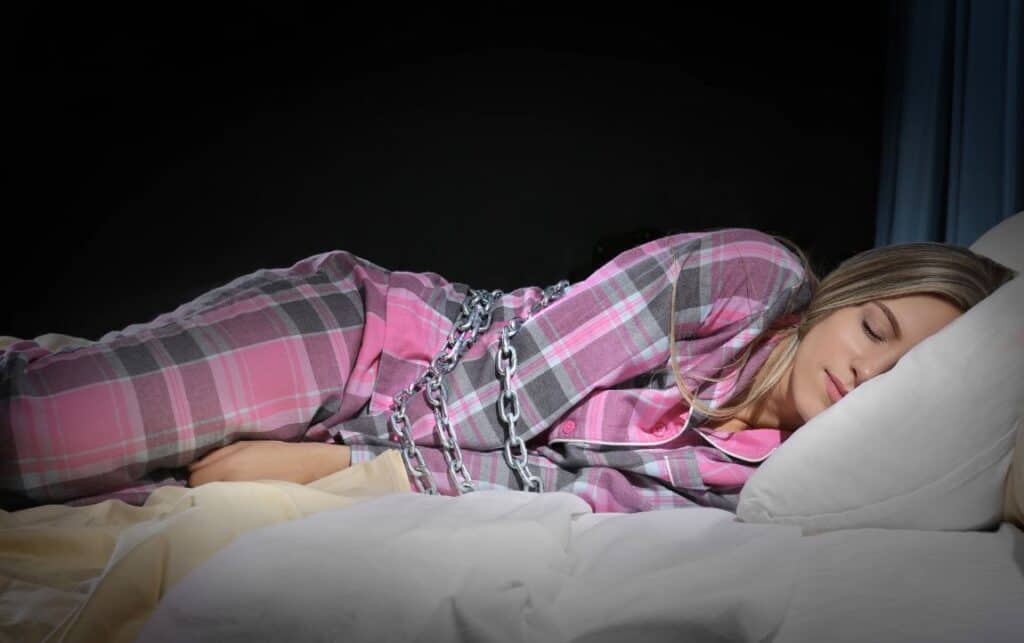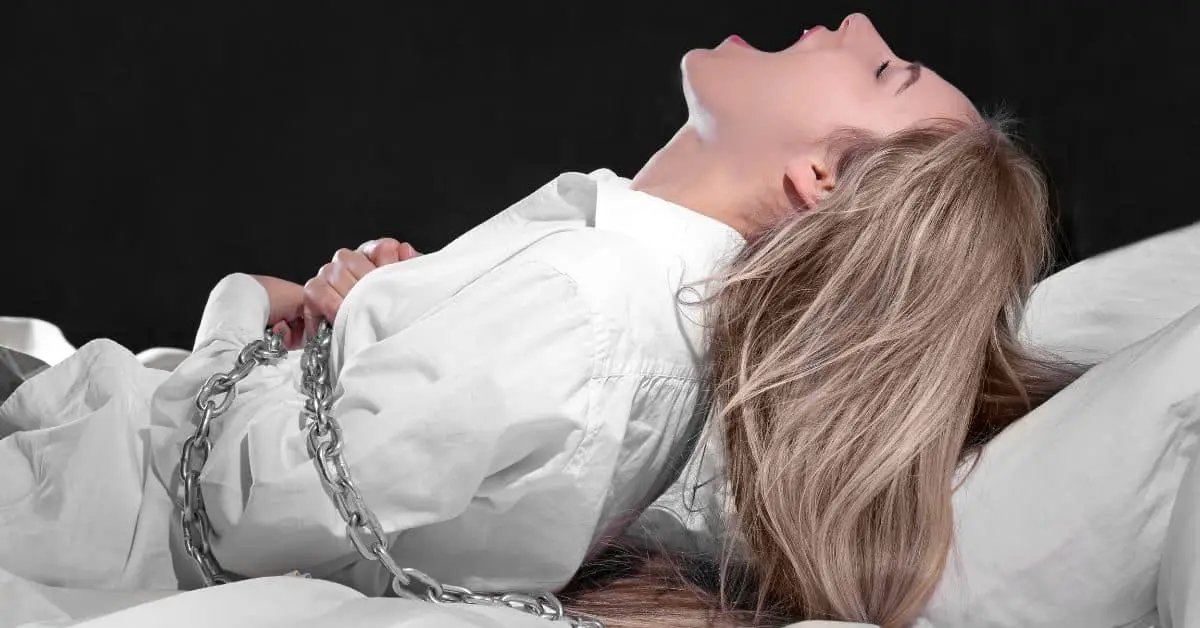What Is Sleep Paralysis: Causes, Symptoms & Treatment
Understanding Sleep Paralysis: Causes & Symptoms

Sleep paralysis is a common parasomnia characterized by an inability to move or speak during the transition into or out of REM sleep.
This REM-associated parasomnia can be a frightening experience, causing anxiety and hallucinations in some cases.
Experiencing sleep paralysis involves being unable to move your body during the following situations:
- Falling asleep (hypnagogic or predormital form)
- Waking up from sleep (hypnopompic or postdormital form)
Typically, during REM sleep, your brain induces muscle relaxation known as “REM atonia” to prevent you from acting out your dreams.
Sleep paralysis occurs when this REM atonia happens while falling asleep or waking up, leading to temporary immobility.
Sleep paralysis episodes can last for seconds or minutes and usually end on their own or when someone touches or speaks to the affected person.
WISELIVN DAILY
Make your inbox healthier and happier with the latest WiseLivn Media stories, delivered fresh daily. Will be used in accordance with our Privacy Policy.
Although it can be a terrifying experience, isolated sleep paralysis does not pose a significant medical risk and does not impact overall sleep quality.
First appearing in the teenage years, sleep paralysis is most prevalent during one’s 20s and 30s but can continue into later life.
However, if sleep paralysis is accompanied by symptoms such as excessive daytime sleepiness, fragmented sleep, sleep-related hallucinations, or cataplexy, it could be indicative of narcolepsy – a serious sleep disorder that requires professional diagnosis and treatment.
Symptoms of sleep paralysis include:
- Inability to move arms, legs, body, or head during sleep transitions
- Episodes lasting from seconds to a few minutes
Several factors can increase the risk of sleep paralysis, such as another sleep disorder, medical conditions, medication use, mental health disorders, or substance abuse.
Sleep paralysis can affect anyone, with the average onset age being 14-17 years, and is more likely to occur in individuals who have a family history of the condition.
Factors like sleep deprivation, irregular sleep schedules, mental stress, and sleeping on one’s back can also contribute to sleep paralysis.
WISELIVN DAILY
Make your inbox healthier and happier with the latest WiseLivn Media stories, delivered fresh daily. Will be used in accordance with our Privacy Policy.
Additionally, bipolar disorder, certain medications, and sleep-related leg cramps may be associated with this sleep issue.
Diagnosing sleep paralysis involves discussing your medical history, sleep patterns, and any family history of sleep problems with a doctor.
If sleep paralysis is affecting your overall sleep or daytime functioning, a sleep study called polysomnography may be recommended.
This test records brain waves, heart rate, breathing, limb movement, and muscle activity during sleep, providing valuable information to help identify potential sleep disorders.
In cases where excessive daytime sleepiness is reported, a Multiple Sleep Latency Test (MSLT) might also be conducted to measure how quickly you fall asleep during the day and the type of sleep experienced during naps.
While recurrent isolated sleep paralysis is generally not harmful, it’s essential to consult a medical professional if episodes cause anxiety or disrupt your sleep quality.
Managing Sleep Paralysis: Effective Treatment Strategies & Techniques
Addressing the underlying causes of sleep paralysis is crucial for effective treatment. Factors such as sleep deprivation, psychiatric conditions, and other sleep disorders may contribute to the occurrence of sleep paralysis episodes.
To minimize the risk of sleep paralysis, it’s essential to maintain healthy sleep habits, aiming for 7-9 hours of restful sleep each night.
Consistently adhering to a regular sleep schedule can help prevent sleep disruptions that may trigger sleep paralysis episodes.
Individuals with psychiatric conditions, such as bipolar disorder, may also experience sleep paralysis.
In these cases, ongoing treatment and medication management under the supervision of a qualified healthcare professional, such as a physician or psychiatrist, are necessary.
WISELIVN DAILY
Make your inbox healthier and happier with the latest WiseLivn Media stories, delivered fresh daily. Will be used in accordance with our Privacy Policy.
Sleep paralysis may also occur alongside leg cramps or following changes in medication.
It’s essential to discuss any concerns or potential side effects with your doctor to determine the best course of action.
Narcolepsy is another condition often associated with sleep paralysis.
If diagnosed with narcolepsy, a sleep specialist will work closely with you to develop a comprehensive treatment plan addressing both sleep paralysis and narcolepsy symptoms.
For those experiencing sleep paralysis without any associated disorders, treatment options may be limited.
However, maintaining a consistent sleep schedule, practicing good sleep hygiene, and implementing stress-reducing techniques can help manage episodes.
Cognitive-behavioral therapy (CBT) may also be beneficial in addressing anxiety and stress-related factors contributing to sleep paralysis.

